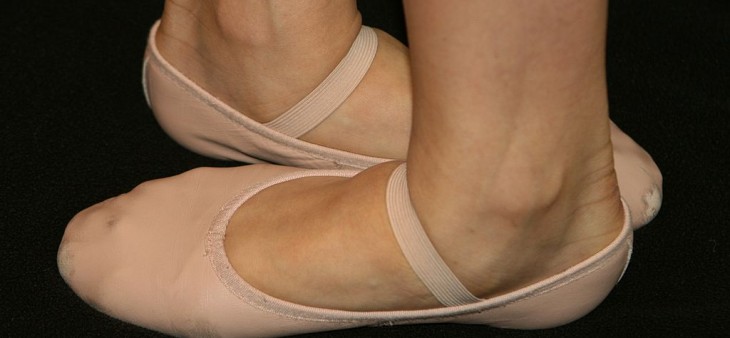
Dancing is a good hobby. When we say good, we mean healthy, enjoyable, and socially gratifying. Whether you dance as a hobby, as a profession, or you occasionally imitate the moves while watching a dancing show on TV or YouTube, your physique gets the much needed exercise as it allows your heart to pump more blood to the various organs of your body.
For those whose heart belong to the classics, ballet is a much preferable genre when it comes to the art of dance. As a matter of fact, one of the top skills (aside from music and sports) that parents would like their children to learn is ballet – especially if their child is a girl – not that boys are excluded, though.

It is not hidden to most people that dancing is an activity which requires a lot of leg and foot work. As the twisting, spinning, bending, and tiptoeing gets harder and repetitive, the strain to those body parts becomes inevitable – thereby flaring the likelihood of injuries.
Given such risk factors, ballet dancing (or any kind of dancing for that matter) is similar to athletics and sports. The thing is, sporting games and athletic activities encourage you to wear shoes that are suitable for the strenuous motions of the feet. You have tennis shoes for tennis players, basketball shoes for basketball players, running shoes for runners, and so on. These shoes are designed to contain insoles and protective covering customised to the demands of the respective sport.
You may retort, “But ballet dancers have ballet shoes, don’t they?” Oh yes, they do. Yet, here is the thing – unlike the shoes for each respective sports game, the structure of ballet shoes is focused mainly on allowing the dancer to freely move her feet (tiptoes and all). There is no thick covering or insoles, and they are merely made of cloth with a rubber thread which keeps them from falling off the ballerina’s feet. In such a case, most of the force and impact are absorbed by the feet.

If your child is doing ballet and she continues to be hooked into it as she is growing up, it would be best to watch out for possible foot injuries.
Sesamoiditis
Usually manifesting as pain in the ball of foot and/or the big toe, sesamoiditis is a disorder that affects the forefoot. It is generally defined as an irritation in the sesamoid bones. The sesamoid bones are the small bones that attach to the big toe side by side with the tendons and ligaments.
Metatarsalgia
The symptom of metatarsalgia may be mistaken for sesamoiditis as it also involves pain in the ball of foot. Also known as the “Stone Bruise,” metatarsalgia is the inflammation of the metatarsals which are the bones inside the ball of foot. This ailment is usually caused by excessive and heavy-impact jumping.
Stress Fracture or Dancer’s Fracture
Ballet dancers landing clumsily from an accelerating jump or mistakenly doing an awkward twist are possible accidents even the most experienced ballerinas may not be able to avoid. Repeated foot movements that are done excessively can break the tiny bones in the toes and foot. Such fractures may be felt with varying degrees of pain, sometimes dull but in most cases intense.
Trigger Toe
If there is one foot disorder that is almost unique to ballet dancers, it is the “trigger toe.” The trigger toe is called as such because it is the condition when the toe gets stuck in a flexure, unable to glide freely with the dancer’s intended motion, sometimes accompanied with a clopping sound or feeling. A thickened or damaged tendon may cause the ballerina to experience a trigger toe.
Dancer’s Heel or Posterior Impingement Syndrome
Sometimes called as Ankle Impingement Syndrome (as it is felt near the ankle or in the ankle itself) is a condition wherein a bump or pinch is formed on the rear part of the foot. This is caused by the continuous wear-and-tear on the tissues when the ankle is always pointing more to a certain position.
Ankle Sprain
A sprain in the ankle is a likely condition to anyone who engages in strenuous foot and leg movements – more so if you are an athlete or a dancer. Faulty twists and accidental slips may happen and should not be discounted on.
On a Final Note
Dancing, and that includes ballet, is a hobby and profession commendable for its benefits to body fitness, personal and social gratification. Yet, like any other physical activity that requires lots of foot and leg work, it is best to have a foot and lower limb specialist on the side who will provide guidance and care – especially if your child is a budding ballerina. Visit your local podiatrist to learn more about foot health and foot care.
References:
Champlin, M. “Ballet Foot Injuries.” Dubai Podiatry Centre. Retrieved from dubaipodiatry.com
“Foot and Ankle Injuries in Dancers.” Midwest Orthopaedics at Rush. Retrieved from www.rushortho.com
“Dance Injuries to the Foot and Ankle.” Foot Health Facts. Retrieved from www.foothealthfacts.org
Dr. Uy, G.P. (30 July 2014) “5 Most Common Causes Of Foot Pain For Dancers.” Dance Comp Review. Retrieved from dancecompreview.com
“Do You Have Sesamoiditis?” Foot●Com. Retrieved from www.foot.com
“Trigger Toe.” Will I Ever Dance Again? Retrieved from danceinjurydvd.com
Image “Young Ballerina” By Frode Inge Helland [CC BY-SA 3.0 (https://creativecommons.org/licenses/by-sa/3.0)], via Wikimedia Commons
Image “Ballet Shoes” By Lambtron (Own work) [GFDL (https://www.gnu.org/copyleft/fdl.html) or CC BY-SA 4.0 (https://creativecommons.org/licenses/by-sa/4.0)], via Wikimedia Commons

Leave a Comment
You must be logged in to post a comment.